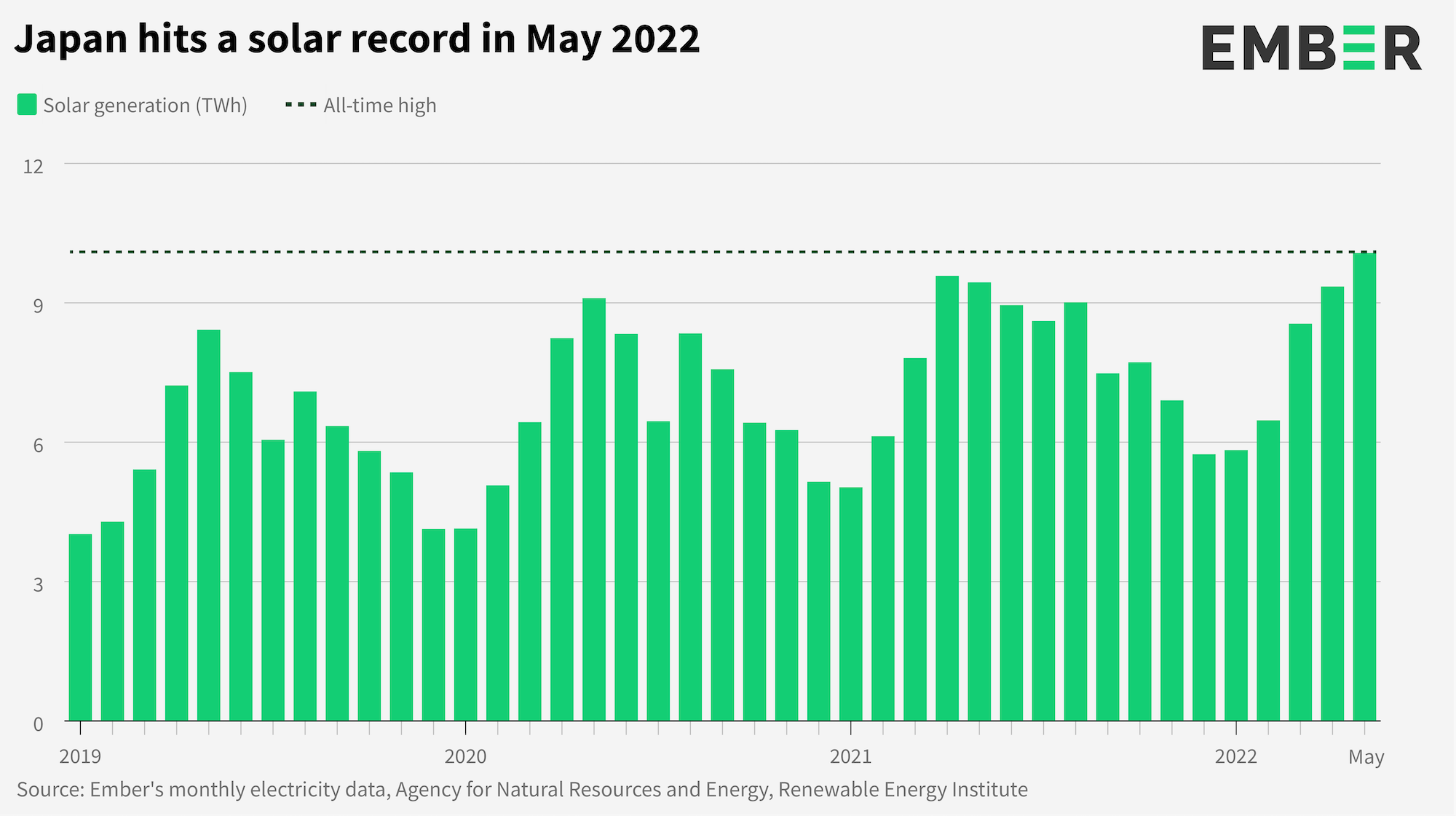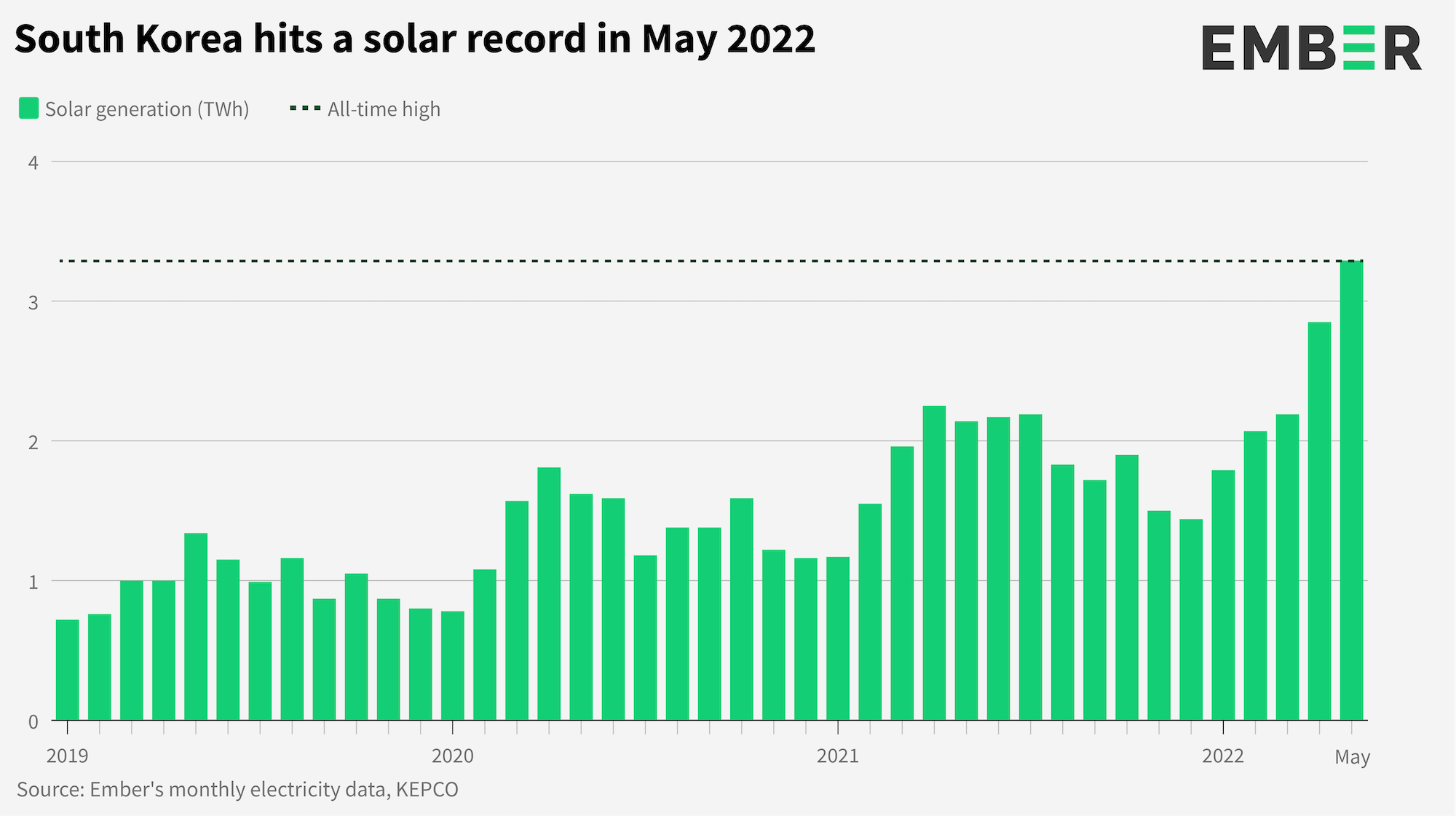Japan and South Korea hit solar power records in May
-
Tokyo, Japan
-
27 July 2022
New data from global energy think tank Ember reveals that South Korea and Japan have both achieved new solar records in May in the midst of a coal and gas crisis.
For the first time, Japan saw a new record for solar generation. It generated more than 10 TWh from solar in May, reaching 15% of total electricity generation.
Meanwhile in South Korea, as May’s electricity demand reached the highest levels since 2005, solar power generated more than 7% of the nation’s electricity, reaching an all-time high for the month.
Japan’s solar capacity in 2021 was 20 times larger than it was in 2010. Thanks to its solar growth in recent years, it was able to generate 9.8% of the country’s electricity last year. However, analysts believe there is considerable potential to expand on this going forward.
South Korea’s share of solar electricity generation has grown from less than 1% in 2016 to over 4% in 2021. But this is still well below the international average.
Across Asia, solar has proven increasingly popular. Asian countries now make up five of the top ten economies in terms of installed solar capacity, including Japan in fourth place and South Korea in ninth place. A decade ago, only two countries in Asia (Japan and China) were among the global top 10.
The trend reflects the global acceleration towards wind and solar energy, which have doubled since 2015 to deliver a record tenth of global electricity in 2021, according to Ember’s Global Electricity Review.
However, Japan and South Korea still remain highly reliant on fossil fuels to generate more than half their electricity needs.
Japan generated 68% of its electricity from fossil fuels across the whole of 2021, and recently began building a new coal plant in Taketoyo in central Japan. South Korea was reliant on fossil fuels to generate 56.2% of its electricity last year.
According to the IPCC’s latest analysis, wind and solar power need to generate more than 40% of the world’s electricity by 2030 to keep climate change at or below 1.5 degrees of warming.
Aditya Lolla Senior Electricity Policy Analyst, Ember Asia
Solar’s continued growth in Japan and South Korea represents a positive sign in moving towards a more sustainable, affordable and secure energy supply. The added capacity has been especially valuable recently, but both countries have a lot more potential they need to tap into going forward.
Notes to editors
Media enquiries
About Ember
Ember is an independent energy think tank that aims to accelerate the clean energy transition with data and policy. It creates targeted data insights to advance policies that urgently shift the world to a clean, electrified energy future.
Methodology
About the data
Ember curates monthly electricity generation data from key national and international sources around the world and these are published on its Data Explorer. The full methodology and sources can be viewed here.
Assumptions
- Monthly generation data for solar before 2018 and 2019 are not available for Japan and South Korea, respectively.
- The assumption that the current records were “all-time high” was tested by calculating maximum potential generation given the capacity of solar of the year and maximum monthly solar capacity factor of respective countries.
- The solar capacity ranking study includes the aggregate capacity for all EU members as a separate entity.


